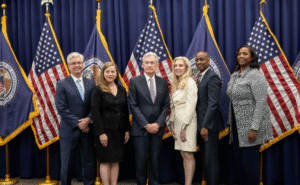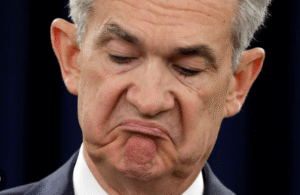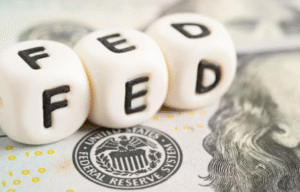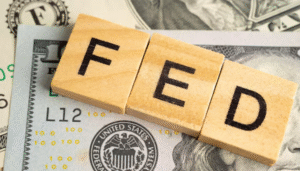$BTC $ETH #Finance #Economy #Tariffs #InterestRates #FederalReserve #Inflation #GlobalTrade #Investing #StockMarket #CryptoMarket
How Did Tariffs Unexpectedly Shape Interest Rate Paths? Discover the Untold Impact!
In the intricate dance of the global economy, the introduction of tariffs has played a pivotal role in shaping the trajectory of interest rates, a development initially unforeseen by many market analysts. As we delve into this phenomenon, it becomes evident that tariffs are not just tools of trade policy but also influential factors in monetary decision-making processes.
The Ripple Effect of Tariffs on Global Interest Rates
Tariffs, essentially taxes on imported goods, were expected to protect domestic industries. However, they also led to increased costs for manufacturers relying on imported raw materials, thereby fueling inflationary pressures. This inflationary push necessitated a response from central banks around the world, particularly the Federal Reserve, which found itself reassessing its stance on interest rates.
Initially, the expectation was that tariffs would be a short-lived strategy, but as they persisted, central banks had to navigate through a new economic landscape. The sustained tariffs disrupted not only trade relationships but also the predicted path of interest rate adjustments. To counteract the inflation caused by increased production costs and retaliatory tariffs from other nations, central banks were pressured to increase interest rates faster and higher than previously anticipated.
Exploring the Domestic Consequences
On the home front, the impact of rising interest rates was felt across various sectors. Higher borrowing costs meant that consumers faced steeper prices for loans, affecting everything from home mortgages to personal loans. This shift could potentially slow down consumer spending and weigh on economic growth, creating a delicate balance for policymakers.
Moreover, businesses planning expansions or investments found the rising cost of capital to be a significant hurdle. The uncertainty surrounding trade policies and their duration only added to the strategic challenges faced by businesses, complicating financial forecasting and planning efforts.
Global Repercussions and Strategic Adjustments
Internationally, the effect of U.S. tariffs rippled across global markets. Other nations, facing their own economic pressures from increased tariffs, also considered adjustments to their interest rate policies. This global synchronization of monetary tightening could lead to unintended consequences, such as stifled global economic growth or increased market volatility.
Furthermore, the interconnectedness of global markets means that policy shifts in one nation can have far-reaching effects, influencing economic outcomes worldwide. As countries adjusted their monetary policies in response to the U.S. tariffs, international investors had to recalibrate their strategies, often shifting capital in anticipation of changing yields across different markets.
Looking Ahead: Navigating a Complex Economic Terrain
As we continue to witness the unfolding impacts of tariffs on interest rates, it’s clear that this issue is more than just a temporary shift in policy. It represents a significant deviation from previous economic forecasts, demanding a rethink of existing monetary strategies. Navigating this complex terrain will require a blend of careful analysis, strategic foresight, and adaptability from policymakers and market participants alike.
For further insights into how trade policies influence financial markets, explore more articles on global trade and stock market dynamics. Additionally, for those interested in how these developments impact the cryptocurrency market, visit Binance for detailed analysis and opportunities.
In conclusion, while tariffs were initially viewed through the narrow lens of trade protection, their broader economic implications have been profound, reshaping interest rate paths in ways that continue to reverberate through global financial markets.











Comments are closed.